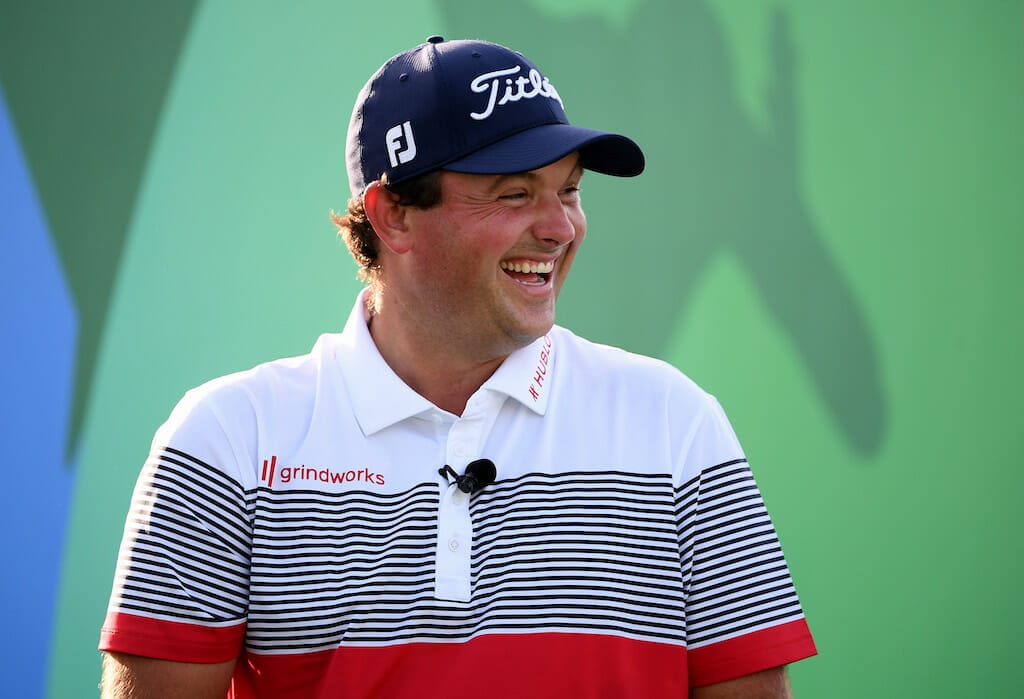Another rules controversy involving Patrick Reed? To borrow a line from the great Chris Rock, “that’s like another dead white girl showing up at OJ’s house”.
This is hyperbole, of course. I’m not really trying to equate questionable sportsmanship with brutal homicide, but even somebody as blinkered as Orenthal James would understand why his most ardent supporters may be hesitant to extending the benefit of the doubt second time around.
After Reed’s sand-dragging fiasco in the Bahamas little over a year ago, suspect behaviour at Torrey Pines ensured the self-styled Captain America was front page news on a week where his play was back page worthy. So let’s dive right in, shall we? It’s probably safe to assume that you’re familiar with the situation that developed as tournament leader Reed salvaged a par at the 10th hole during the third round, so I’ll spare you the play-by-play details, but Reed claimed that his ball had plugged – “embedded” in American golfing lingo – in the soft ground following the previous day’s deluge, when video footage clearly showed the ball bounce after initial impact.
Now, if there is any leeway to be afforded to the 2018 Masters champion, it’s that there is no way from his vantage point that he could’ve seen the ball bounce, and he did ask his paying partners and the lone volunteer in the area if any of them had. They hadn’t, so the most controversial figure in the game took it upon himself to lift the ball and “examine” the area to see had it plugged, before calling the rules official for confirmation.
So did Reed cheat? That’s a tough question to answer, and is in no way comparable to the Hero Challenge fiasco where even the most casual of golf fans could clearly see him improve his lie in the bunker. Reed himself, speaking after the round, confirmed that there was no way the ball could’ve embedded having bounced first, but there is always the possibility that the ball eventually settled into an indentation made by a player in one of the previous groups, or in earlier rounds. We’re talking extremely low likelihood, but it’s a possibility nonetheless, and would clear Reed of any sinister wrongdoing.
But that requires extending the world number 10 the benefit of the doubt, and in my opinion, that is something that is earned rather than taken for granted. And Reed’s history suggests it is a long way from being earned.
Should he have waited for the rules official to determine whether or not relief was warranted? Well, Rory McIlroy similarly ascertained that his ball was plugged on the final hole and took relief himself without involving the officials. In an era where slow play is criticised, calling for back up shouldn’t be the automatic choice for most players, but for somebody already under a cloud of suspicion then it absolutely should. Calling in a rules official when the ball had already been picked up and the area probed effectively made it impossible to declare with any certainty that Reed was entitled to the drop.
Perhaps the most disappointing aspect of the entire scenario was also the least surprising. PGA Tour rules official Ken Tackett called the drop “textbook” in the aftermath. Well, I’ve got news for you Ken, whatever it was, it certainly wasn’t that. But it’s largely what we’ve come to expect from the PGA Tour. If you watch enough golf, you’d be forgiven for thinking that PGA Tour rules officials’ purpose for being is to allow players to bend the rules as much as possible, which leads to players trying to push the boundaries as much as possible. See Bryson DeChambeau seeking relief from a horrid lie by claiming that a few ants in the vicinity posed a threat to the health and safety of the near eighteen stone hulking giant.
Players will routinely get relief from cart paths, even though they’d need to be Olympic gymnasts to actually take the stance they claim they would like to; the same goes for sprinkler heads, TV towers and any other conceivable object that can be used to their advantage.
With long-time rules officials Mark Russell and Slugger White recently retiring – the latter who became something of a caricature for repeatedly referring to players as “gentlemen” when their conduct clearly suggested otherwise – the Tour has the opportunity to restore credibility to the role and to cease the practice of rules officials being an effective 15th club in every professional’s bag.
What should have happened when rules official Brad Fabel arrived to assess the Reed situation on Saturday, is that the player be told “there is no way I can definitively say your ball was embedded when you’ve already moved the ball away from the spot in question.” In that case, Reed would’ve had to replace the ball and play it as it lay.
But I guess that’s wishful thinking. The Tour have spoken. Textbook drop. Gentleman. Nothing to see here….
























Leave a comment